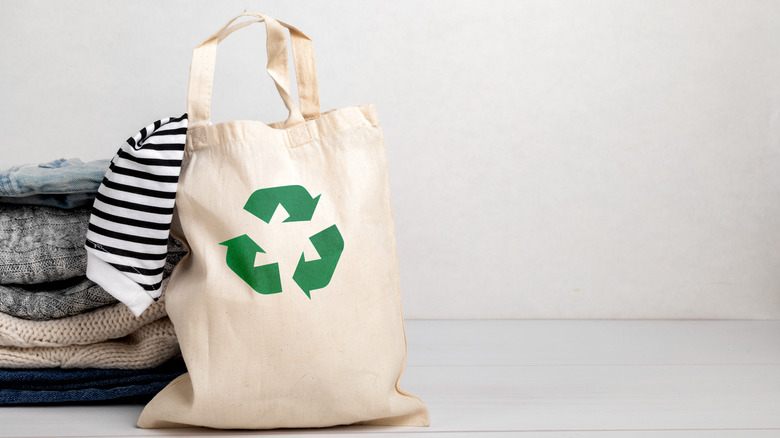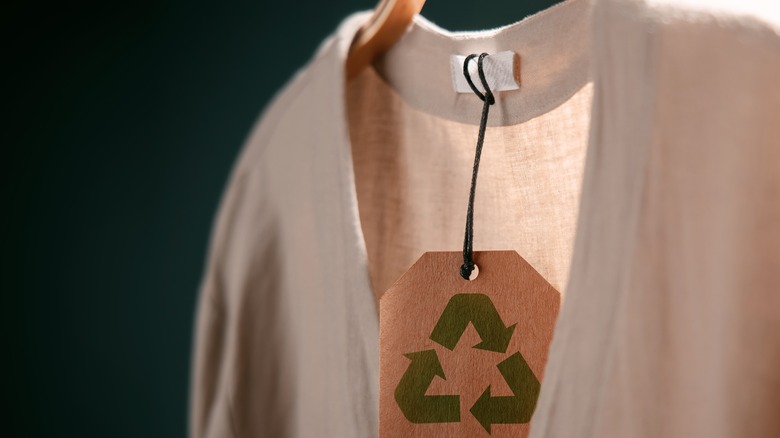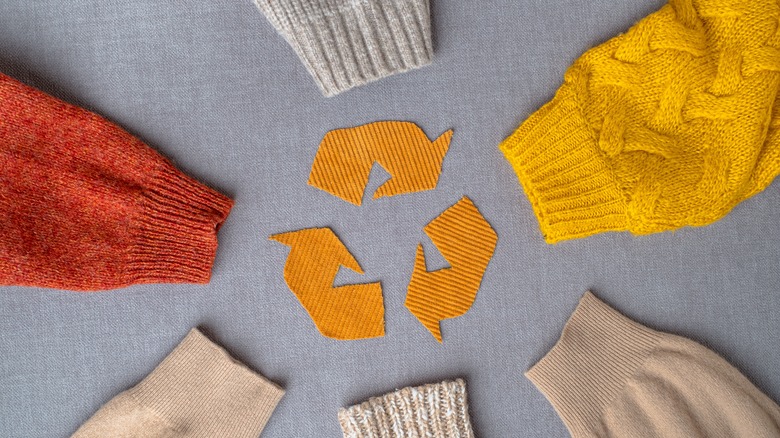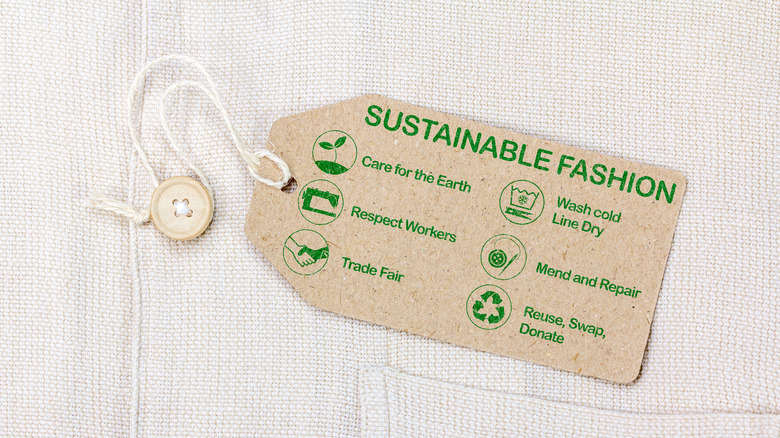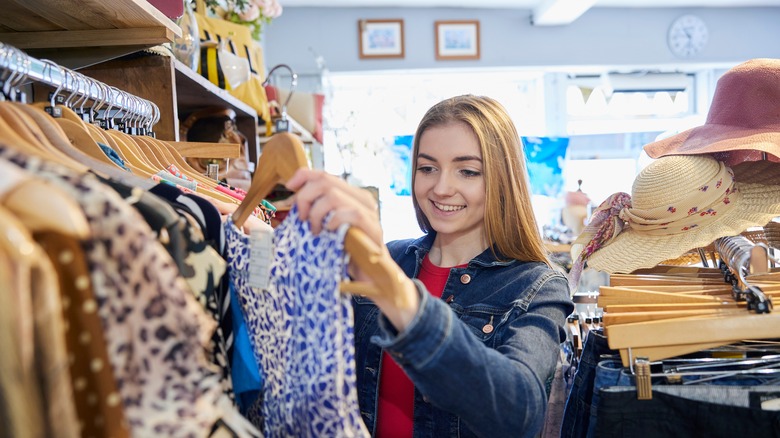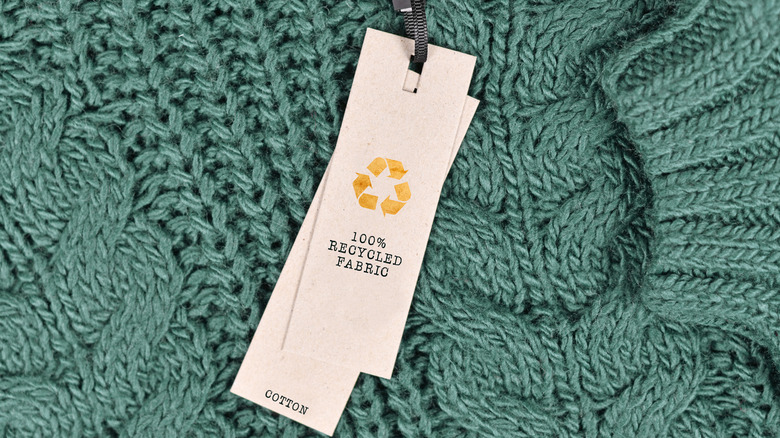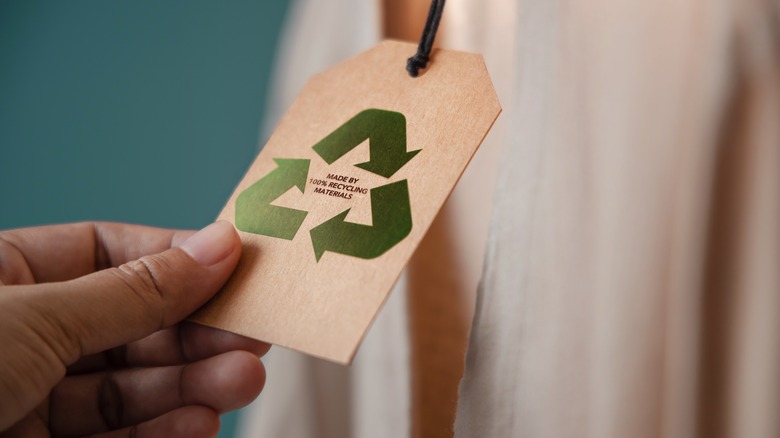Greenwashing: What Is It And Why Is It So Bad?
There is a growing societal awareness of the importance of sustainable fashion and decreasing our environmental footprint. Brands are cleverly picking up on that to get you to spend more money. While you might be on the fence about buying that new top, seeing that it was made of "sustainably sourced, eco-friendly materials" might convince you to pull the trigger. Sure, you're spending money on another shirt you don't need, but at least it's on something environmentally conscious. After all, you resolved to become greener. But what does sustainably sourced mean? What about eco-friendly?
As validating as it can be as a consumer to read these terms listed on a website or the tag of your favorite sweater, the reality is that they are too broad to be easily defined. Therefore, companies can get away with throwing around claims like these to mislead consumers in a marketing tactic known as greenwashing. "There really is no industry agreed-upon or legal definition of sustainability," says the chief marketing officer of Remake, Katrina Caspelich, via The Washington Post. "As a result, brands are really defining sustainability based on their own interpretations in order to justify salary, growth and profit." Understanding greenwashing can help you spot it and avoid falling for this marketing tactic.
Common examples of greenwashing
Generic terms like "eco-friendly" and "sustainable" often pop up in instances of greenwashing. If a company can't prove that its clothing is all of those things, there's a good chance it's trying to sell its products — and itself — as being more environmentally conscious than it is. Additionally, many clothing companies will also advertise a garment as organic or made with recycled material, when in reality, only a tiny percentage of the textile is. This is another creative way some clothing brands use vague marketing to get away with greenwashing.
Clothing advertised as derived from specific materials to help it pass the eco-friendly bar is another common way many companies manipulate consumers. For example, shirts are often tagged as "100% cotton" since it is more sustainable than other materials, such as polyester, made from petroleum. As such, it is better for the environment since it doesn't contribute to such high greenhouse gas emissions. However, Cosette Joyner Martinez, an associate professor in the design, housing, and merchandising department at Oklahoma State University, notes that some cotton cannot be eco-friendly if toxic chemicals are used to treat the fibers or grow the plant. "[But] none of that information will be disclosed so that the sustainable [insistence] is never really substantiated," Martinez says, per The Washington Post.
Greenwashing slows the fight for meaningful change
Greenwashing misleads consumers about a brand's commitment to environmentalism and reduced carbon emissions during manufacturing. But that's not all. It also prevents genuine, sustainable companies from setting themselves apart in the market or successfully advertising to consumers as truly green. Buzzwords like "eco" and "organic" are commonly used by many brands, making it so much harder for consumers to spend money on the companies working to protect our environment. As fashion lawyer Douglas Hand says, via Vogue Business, the biggest and most expected names in the fast-fashion industry buy the highest-appearing Google search results relating to those terms. This hides smaller, more environmentally-centered brands amongst the masses and prevents them from ever truly having a chance to become leaders in the market.
Additionally, the lack of regulation and legislation regarding greenwashing negatively impacts these brands. "We're all using the same language to describe sustainability on a massive spectrum," says Corey Spencer, co-founder of contemporary denim label, Amendi. "The brands genuinely committed to sustainability can't compete in that space," via Vogue Business.
Why is greenwashing so difficult to combat?
According to The Business of Fashion, The Netherlands' Authority for Consumer Markets busted clothing from popular apparel brands H&M and Decathlon over deceptive marketing verbiage such as "ecodesign" and "conscious," after deeming them unverifiable and ambiguous. As a result, both brands promised to modify sustainability language for marketing or sales or refrain from using them entirely. While governments are cracking down harder on greenwashing and misleading marketing, passing sweeping legislation throughout the fashion industry is challenging when it's such a global entity. "A lot of fashion businesses operate across different countries and regulatory systems, so there's a practical challenge in cross-border enforcement," says Cecilia Parker Aranha, Director of Consumer at the Competition and Market Authority (CMA), per Vogue Business.
When enforcing any accountability for greenwashing on a global scale, it can be difficult for everyone to agree on the best way to do it. "Clear guidance is essential for legal practitioners to advise clients, but it's proven difficult for regulators to get on the same page," adds Douglas Hand via Vogue Business. "I typically advise clients to adopt a favoured nation mentality and abide by the most rigorous standards. The problem is that one country isn't the highest standard in every area of fashion, so there is no complete roadmap of the highest standards. It would be ideal if several sovereign nations could come together to try and globalise regulations," Hand concludes.
The court of public opinion
As consumers, we decide where and how to spend our money. In a capitalistic society, sometimes the loudest way we can speak is by choosing to support or not support a particular brand or its messaging. Holding your favorite clothing company accountable for delivering on its promises to lessen its environmental footprint and manufacture its products sustainably — yes, with receipts and all — is the best way to do your part to support the planet. And you can do so by spending your money elsewhere should they fail to follow through. "[Fashion] is a market where the products we make bring zero utility, so every bit of value embedded in a product — that allows a brand to charge a certain price, that allows customers to feel that they want it or that it's worth that price — is entirely derived from perception, almost exclusively," explains Michelle Gabriel, Director of Glasgow Caledonian New York College's Masters of Science Sustainable Fashion program, via Fashionista.
"It would be foolish to intentionally greenwash when the court of public opinion is almost as high as regulation," adds Douglas Hand, via Vogue Business. For instance, look at Zara, which faced widespread criticism and backlash for failing to release its audits after announcing its commitment to operating all locations under 100% renewable energy by 2022.
How to know if a company is actually green
In a recent inspection of websites worldwide, The International Consumer Protection and Enforcement Network (ICPEN) found that two out of every five sustainable claims made by brands were actually disingenuous, per Vogue Business. In an industry with so many companies swearing to be eco-friendly, how can you tell which ones actually are? When identifying greenwashing, it all comes down to solid evidence — the more, the better. On the other hand, companies often offer much information to provide proof, while not saying much is another marketing tactic known as clearwashing.
"Clearwashing is like 'We're going to provide you the appearance of rich information that ultimately is not meaningful," says Cosette Joyner Martinez (via The Washington Post). "Giving me a street address of a supplier in China doesn't tell me anything about what goes on there." An easy way to verify that a company can back up its claims of environmental friendliness is if an official third-party vetting organization approves it. A quick Google search on the organization can help you understand its credentials. A third-party approval regarding environmental friendliness usually indicates that the company has some solid evidence that they are doing good for the planet.
How to actually shop more sustainably
While fast fashion brands like Shein continue to dominate the market, experts say more and more of the population is becoming eco-conscious regarding how they shop. As such, "There's an incentive to make vague, false or misleading claims about sustainability, and to hide information which could show products as unsustainable," says Josephine Palumbo, President of ICPEN, via Vogue Business. "We need to ensure consumers' willingness to invest in ethical and sustainable products is not exploited."
To truly transition to sustainable fashion, experts say it's best to say goodbye to fast fashion. While it may feel like you're saving money, the general lack of quality and manufacturing makes these garments nondurable, causing you to spend more money in the long run. When these clothes wear out, they end up in landfills, polluting the environment with plastic fibers. Overall, buying sustainably means shopping in a way that keeps clothing out of landfills. "When we talk about sustainable consumption of clothing, the brass ring is garment longevity," says Cosette Joyner Martinez (per The Washington Post). This means investing in pieces from reputable brands that are genuinely committed to bettering the planet that is high-quality and won't need to be replaced often. Or better yet, thrifting some new staple pieces allows you to update your wardrobe in a way that doesn't harm the environment.
